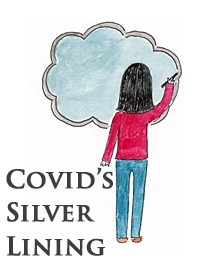According to Mayo Clinic, physicians should refer kidney patients for transplant when their GFR reaches 25 to ensure they are evaluated and listed in a timely fashion. The goal is get patients evaluated before their condition worsens, and ultimately avoid complications from dialysis that could effect transplant eligibility.
(Excerpts taken from: https://www.mayoclinic.org/medical-professionals/transplant-medicine/news/top-5-reasons-to-refer-a-patient-early-for-kidney-transplant/mac-20575082).
Late Referrals:
1. Force transplant eligible patients on dialysis. Dialysis leads to a significant decline in the patient’s quality of life—and increases risks for infections, anemia and cardiovascular events such as stroke, heart failure and myocardial infarction.
2. Sabotage transplant opportunities as the patient’s health and independence declines, triggering disqualifying co-morbidities.
3. Rob eligible transplant patients from vital education that would otherwise prepare them for proactive self-advocacy, and a timely listing for the best outcome.
4. Stretch out “evaluation timelines” and disrupt the likelihood of underlying medical conditions getting evaluated beforehand.
5. Lead to unrealistic timelines for finding suitable living kidney donors. Much of this is due to poor education, and a lack of preemptive (live-donor) awareness and encouragement.
There are several resources available to help patients attract living kidney donors who can help them avoid (or eliminate the need) for dialysis. One such resource is the “Donor Seeker,” which inspires hopeful recipients talk-up, team-up and learn how to share their story to attract interested donors in less than 15-minutes. “Donor Seeker” is a free download from Android and Apple app stores. Learn more here: https://transplantfirst.org/donor-seeker-how-to-find-kidney-donors/





 These days, securing a kidney transplant—before dialysis, requires more luck than medical qualifications. It seems that the biggest barrier to transplant is not so much disqualifying health factors, as much as it is about knowing how to proactively secure a transplant before dialysis is required.
These days, securing a kidney transplant—before dialysis, requires more luck than medical qualifications. It seems that the biggest barrier to transplant is not so much disqualifying health factors, as much as it is about knowing how to proactively secure a transplant before dialysis is required.
 COVID 19 is forcing transplant centers to cancel live kidney donor transplants and put “donor testing” on hold. Hopeful recipients are emotionally struggling with this disruptive and unpredictable standstill. Their thought bubbles sound like: “Will my donor change their mind? Will my GFR hold? Will I be forced on dialysis or be taken off the list as I get sicker?”
COVID 19 is forcing transplant centers to cancel live kidney donor transplants and put “donor testing” on hold. Hopeful recipients are emotionally struggling with this disruptive and unpredictable standstill. Their thought bubbles sound like: “Will my donor change their mind? Will my GFR hold? Will I be forced on dialysis or be taken off the list as I get sicker?”
